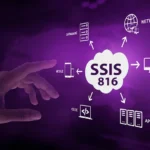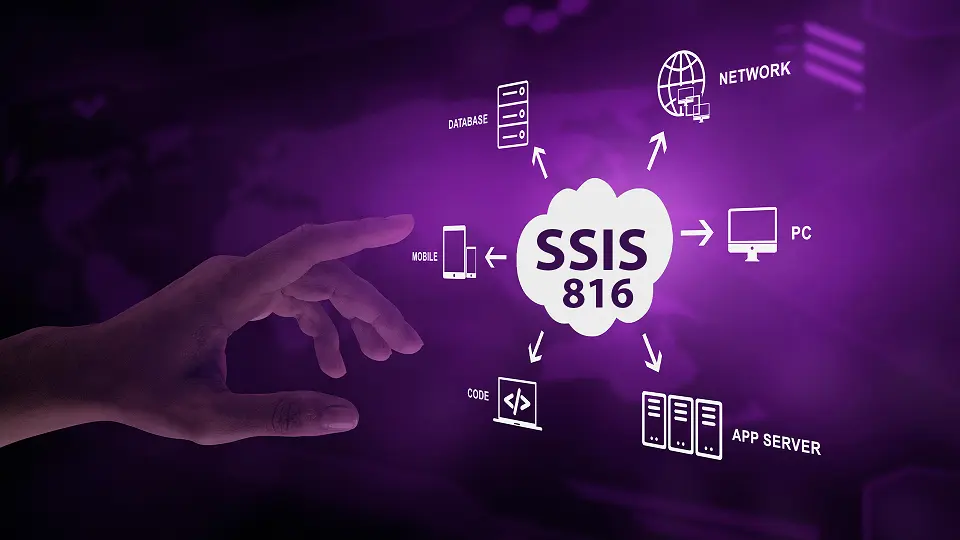The tech world is no stranger to innovation, but few developments have had as profound an impact as SSIS 816. This game-changing tool has transformed how companies handle data integration and migration, streamlining processes that once seemed daunting. The evolution of SSIS 816 marks a significant milestone in the industry, paving the way for more efficient operations and powerful data management solutions. Whether you’re a seasoned professional or just dipping your toes into the waters of data technology, understanding SSIS 816 is essential for navigating today’s complex digital landscape. Let’s dive deeper into its history and explore why this code truly changed everything.
History of SSIS 816 and its impact on the tech industry
SSIS 816 emerged from the need for more robust data processing solutions in an increasingly digital world. Initially developed as part of Microsoft SQL Server, this tool aimed to simplify and enhance the ETL (Extract, Transform, Load) process.
As organizations began grappling with vast amounts of data, SSIS 816 offered a reliable way to integrate disparate sources seamlessly. Its user-friendly interface allowed both technical and non-technical users to participate in data projects.
The release sparked a transformation within businesses across various sectors. Companies that adopted SSIS 816 quickly realized improvements in efficiency and accuracy when handling their data workflows.
Furthermore, it paved the way for advanced analytics capabilities. By enabling faster access to clean, actionable information, SSIS 816 has played a crucial role in decision-making processes throughout the tech industry.
Features and capabilities of SSIS 816
SSIS 816 stands out with its robust features tailored for modern data challenges. It offers seamless integration capabilities, allowing users to connect various data sources effortlessly.
One of its key strengths is the enhanced ETL (Extract, Transform, Load) process. Users can transform and clean data in real time, ensuring high-quality results.
Another significant feature is its user-friendly interface. This intuitive design makes it accessible for both seasoned developers and beginners alike.
Moreover, SSIS 816 supports diverse formats such as XML, CSV, and JSON. This flexibility enables organizations to handle different types of data without hassle.
The built-in error-handling tools further enhance reliability during data migrations. Users can trace issues back to their source quickly.
Automation capabilities streamline workflows too. Scheduling tasks reduces manual intervention and boosts efficiency across projects.
How SSIS 816 revolutionized data integration and migration
SSIS 816 has set a new standard in the realm of data integration and migration. With its intuitive interface, users can easily design complex workflows without extensive coding knowledge. This accessibility empowers teams to be more agile and responsive.
One standout feature is its robust connectivity. SSIS 816 seamlessly integrates with various databases, cloud services, and flat files, enabling smooth data transfers across platforms. Businesses can now consolidate information from disparate sources effortlessly.
Moreover, the performance enhancements in SSIS 816 allow for faster processing times. Organizations experience reduced downtime during migrations as they move vast amounts of data efficiently.
Data transformation capabilities have also evolved significantly. Users can manipulate and cleanse their datasets on the fly, ensuring high-quality outputs that align perfectly with business requirements.
These advancements have transformed how businesses approach their data strategies, making them more competitive in today’s fast-paced market environment.
Success stories and case studies of companies using SSIS 816
Many companies have harnessed the power of SSIS 816 to enhance their data workflows. A notable example is a major retail chain that integrated diverse data sources to streamline inventory management. By leveraging SSIS 816, they reduced processing time by over 50 percent.
Another success story comes from a healthcare provider that faced challenges with patient record integration. Using SSIS 816, the organization achieved seamless data migration across systems, improving access to critical information and enhancing patient care.
A financial services firm also saw remarkable results. The company used SSIS 816 for real-time reporting, allowing them to respond quickly to market changes. This agility has set them apart from competitors in an ever-evolving industry.
These examples illustrate how various sectors benefit significantly from adopting SSIS 816 into their operations. The impact on efficiency and decision-making continues to resonate across organizations worldwide.
Future developments and advancements in SSIS
The future of SSIS looks promising, as technological advancements continue to shape data integration. Enhanced AI and machine learning capabilities are on the horizon, enabling more intelligent data workflows.
Real-time analytics is set to become a standard feature. This means organizations can make faster decisions based on up-to-the-minute data insights. Integration with cloud services will also be more seamless, facilitating better migration processes across hybrid environments.
Expect improvements in user experience as well. A focus on intuitive interfaces will reduce the learning curve for new users. Additionally, community-driven developments might lead to innovative plug-ins that expand functionality further.
Security measures are likely to evolve too. Increasing concerns over data privacy, enhanced encryption, and compliance features will be essential for businesses relying on SSIS for sensitive information handling.
FaQs
SSIS 816 has transformed the data integration and migration landscape, making it an essential tool for businesses today. Here are some frequently asked questions to help you understand more about this powerful software.
What is SSIS 816?
SSIS stands for SQL Server Integration Services version 8.16, a feature-rich platform designed for data extraction, transformation, and loading (ETL). It simplifies complex data workflows and enhances overall efficiency in handling large datasets.
What are the key features of SSIS?
SSIS 816 boasts several notable features: a user-friendly interface with drag-and-drop functionalities, extensive support for various data sources including SQL databases and flat files, advanced error handling mechanisms, built-in transformations, and robust logging capabilities that ensure seamless monitoring of processes.
How does SSIS impact data integration?
Its sophisticated ETL capabilities allow organizations to easily consolidate disparate systems into cohesive environments. By automating routine tasks such as importing or exporting data across platforms, companies save time while minimizing human error during critical operations.
Can small businesses use SSIS?
Absolutely! While it’s popular among larger enterprises due to its scalability and flexibility, many small businesses also leverage SSIS 816’s capabilities to streamline their operations without incurring hefty costs on custom solutions.
Are there training resources available for learning?
Yes! Microsoft offers comprehensive documentation along with online courses through platforms like Microsoft Learn. Additionally, community forums provide valuable insights from experienced users who regularly share tips and best practices.
As technology continues evolving rapidly; staying informed about tools like SSIS can open up new possibilities in your organization’s approach toward managing its most valuable asset—data.










